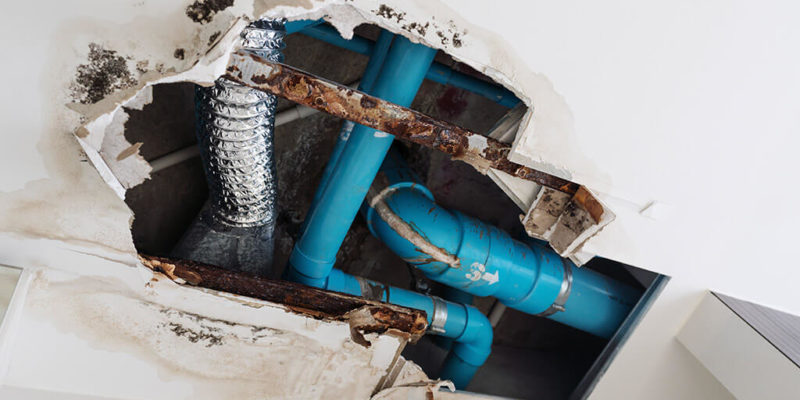Mold can thrive in your home if it has damaged plumbing, is exposed to water, or is not well-ventilated. The most important factor is the home’s plumbing system. It is the first thing homeowners can control, as it sets the stage for other conditions. Here are the most common plumbing problems that can cause mold.
Some areas of your home may get less sunlight than others. This is a fact that you cannot avoid. However, this does not mean that these areas are more likely to grow mold if poor ventilation or moisture-laden air is not present. The primary cause of mold growth in any part of your house is excessive moisture. Water damage to any part or the plumbing is the most likely cause of this.
Mold is more likely when there are plumbing problems in your home. To prevent mold growth, it is important to fix any plumbing issues. This sounds easy enough. However, an average home has over 100 feet of plumbing. It is difficult to monitor the entire length of it. Knowing the most likely plumbing issues that will lead to mold growth is a good idea. It is easy to prevent mold infestation in your home if you notice these areas.
Leaks Beneath a Kitchen Sink
It might seem easy to see if the pipe under your sink is leaking. Either the water would be falling or the area around the sink would be wet. These signs will not be visible if the area isn’t enclosed or used as storage. We love hiding kitchen items in under-sink areas. They keep them easily accessible. To hide ugly pipes, homeowners can also enclose the area. Mold growth is possible if the underside of your sink is enclosed or used to store items.
Standing Water
Clogged drains or blocked sewers are two common causes of standing water in your home. These occur most often in the bathroom. If water drains slowly, it can penetrate the surfaces of adjacent areas. Water seeps through tile, flooring, and walls and can stay there, causing mold growth. This problem is hard to spot. Because homeowners think that once standing water has stopped draining, the problem is solved. They don’t realize that water can seep into their walls and floors instead of draining.
Hidden Leaks
Plumbing leaks can occur in any area of your home that is not visible to the public. A good portion of the home’s pipes runs through the walls. A pool of water is a sign that a pipe burst has occurred within the walls. The water is absorbed into the insulation and surrounding drywall. Walls that are unusually cool or discolored may indicate a leak. It is more difficult to detect a leak if it is hidden in the wall. Regular inspections and timely maintenance are the best ways to avoid plumbing problems that can cause mold.
Flooding of Any Kind
Porous materials make up the majority of house construction materials. They absorb and retain water. The building absorbs water when it floods due to human error or natural disasters. The more water that enters the home, the longer it stays submerged. The floodwater that has been absorbed by the home’s contents and surfaces is not immediately released after cleaning. It will instead remain trapped in walls, floors, and wooden structures throughout the home. This water can lead to the building’s deterioration and creates opportunities for mold growth.
Are You in Need of a Plumber’s Assistance?
Clog Kings is available to assist you with any plumbing issues in your home. While it is not a good sign to see mold growth in your home, or signs of a problem with your plumbing system, they can both be signs of one another. Contact us today to get the help you need if your plumbing is acting up.


